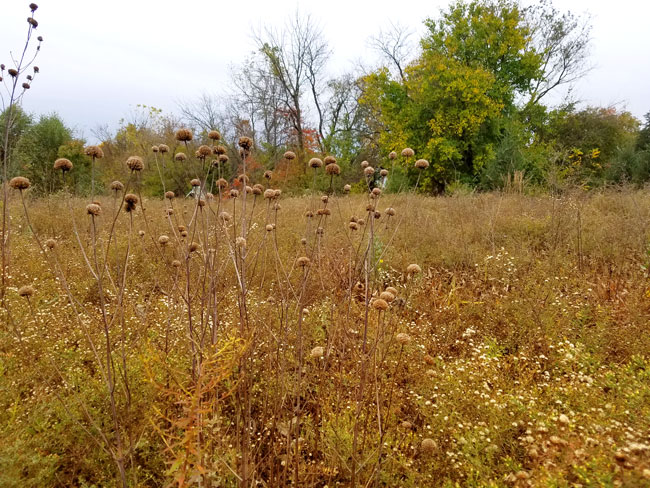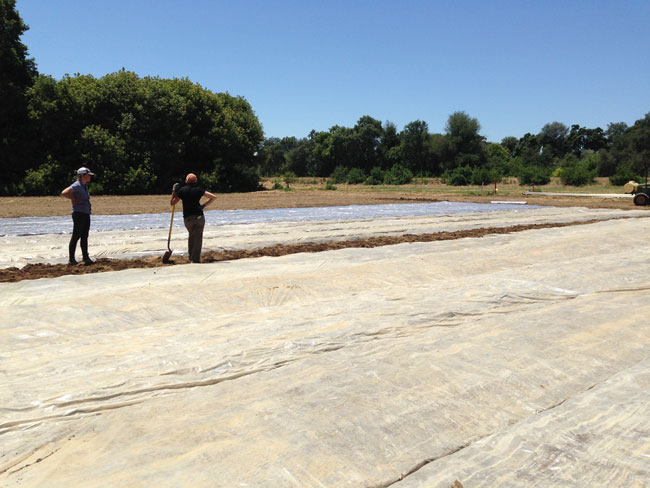As cooler temperatures sweep across the Northeast, it can be easy to put thoughts of blooms, bees, and butterflies to bed until next spring. I think we can agree that many of us reserve visits to meadows, gardens, and other flower-rich habitats for warm, sunny days, so we can enjoy the diversity and beauty of the many insects we may encounter. While it is a treat (that never gets old) to be out exploring meadows full of booming wildflowers buzzing with activity, pollinator conservation is not a seasonal task.
Pollinators need our attention year-round. Planting native wildflowers or flowering trees and shrubs is a great way to help pollinators, but for conservation to be successful, we have to go a step further – providing and protecting habitat that meets the needs of these animals in all of their life stages. This means habitat must be designed to include nesting opportunities, shelter, and overwintering sites to sustain pollinators throughout the calendar. It also means that there is no “off-season” at the Xerces Society. As plants and insects prepare for winter, Xerces’ staff are busy installing new habitat, planning for future projects, and going back to project sites to assess current conditions and make management decisions (and some of that boring desk work stuff too).
This fall, Xerces’ staff were in the field assessing wildflower plantings that were seeded 4-5 years ago. Continually monitoring the plant communities and site conditions over time is an important aspect of habitat management. In fact, the dormant season is a great time to scout for the presence of invasive species. These are often plants that are still green and easier to spot as native species go dormant.

Late fall is also a good time to implement management activities such as patch-mowing. Mowing portions of the meadow in fall controls encroachment of woody plants and keeps the habitat open. Mowing small patches every year (a third each year, in rotation) leaves the rest of the plants standing to provide cover and structure for insects overwintering in the soil, understory, thatch, in stems, or attached to other plant parts. This also allows plenty of seed heads to persist, offering an important food source for birds and other animals. Other management options include prescribed burns, grazing, or old-fashioned manual cultivation (aka weed pulling.) Now is also a great time of year to collect native seed for future meadow projects, or to sow seeds into prepared sites.
Fall is often a time when we prepare projects to get a head start on next year. For sites where solarization is to be used to eradicate weeds in preparation for meadow, plastic is often applied at this time of year to get a jump on weed destruction. Having the plastic in place now means you’re already set for whenever spring arrives next year.

Thoughtful management in all seasons is essential to maintaining the diversity and intended function of pollinator habitat. Go beyond the bloom to make sure your habitat is helpful to pollinators in winter, spring, summer, and fall.




